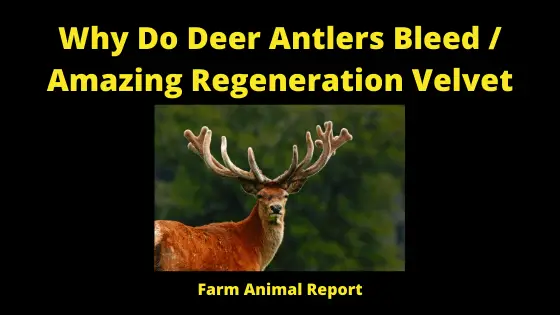On Average Deer Antlers Bleed during the Spring when a Deers antler Rejuvenate. Velvet covers the growing horns. This carries the Blood flow for Fast Growth. They will bleed during the Velvet Stage. Once grown the horns calcify and stop growing. After the mating season, the male deer naturally shed his antlers
Why do Deer Bleed when they shed Their Antlers?
Deer Shedding Velvet – Why Do Deer Antlers Bleed. Deer antlers are made up of true bone. The bone is grown from March to August and is covered in velvet. The antlers/bone are fed by blood carried in the velvet. Why do Deer Bleed when they shed Their Antlers?
There is a little bit of blood at the root, where it joins the head. It needs a blood supply to grow. Further up it just becomes solid bone, as it calcifies, the blood supply is cut off.
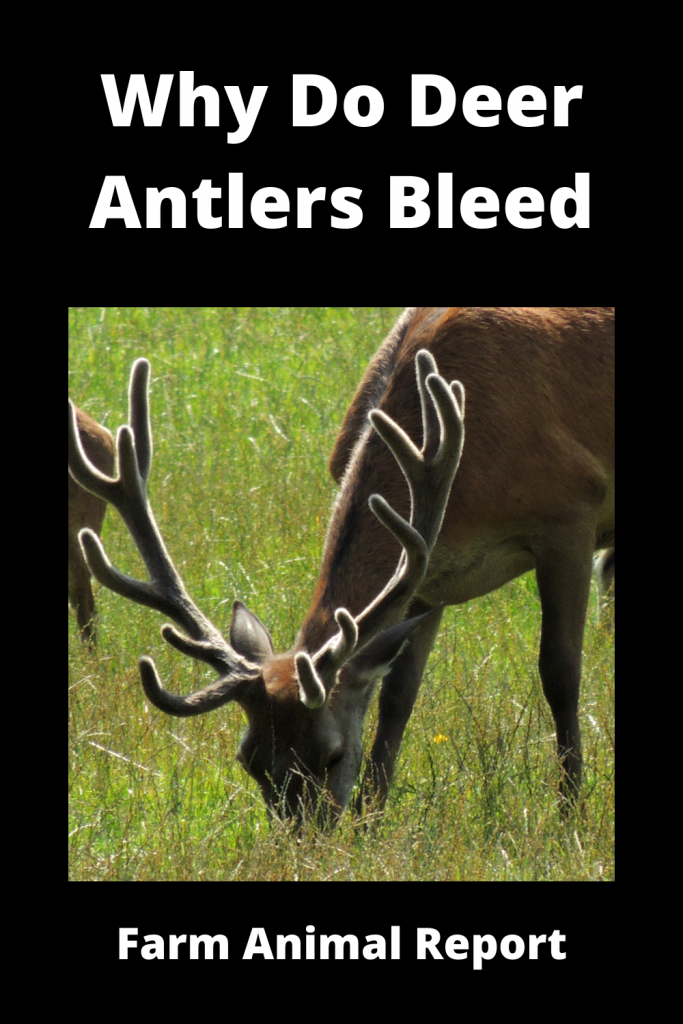
In August/September the deer rub off the velvet to reveal the hard bone antlers. Velvet antlers are hot to the touch and have hair and a waxy coating. Deer need protein and minerals to grow their antlers. Once the velvet is gone the antlers no longer have any blood in them. Why do Deer Antlers Bleed
Check Out Amazons Educational Books on Whitetail Deer
Why Do Deer Antlers Bleed / The Science
The rate at which a buck antler grow depends on factors such as genetics, health age stress, soil quality, and overall quality of natural and agricultural habitat.
Antler Growth Regulated By Daylight / Length
When day length reaches a certain point (around April 1 in North) blood begins flowing to the pedicle and antlers begin growing, always from the center of the beam or tine. The skin covering the pedicle pushes upward through a series of veins and arteries and forms a protein base upon which minerals are deposited.
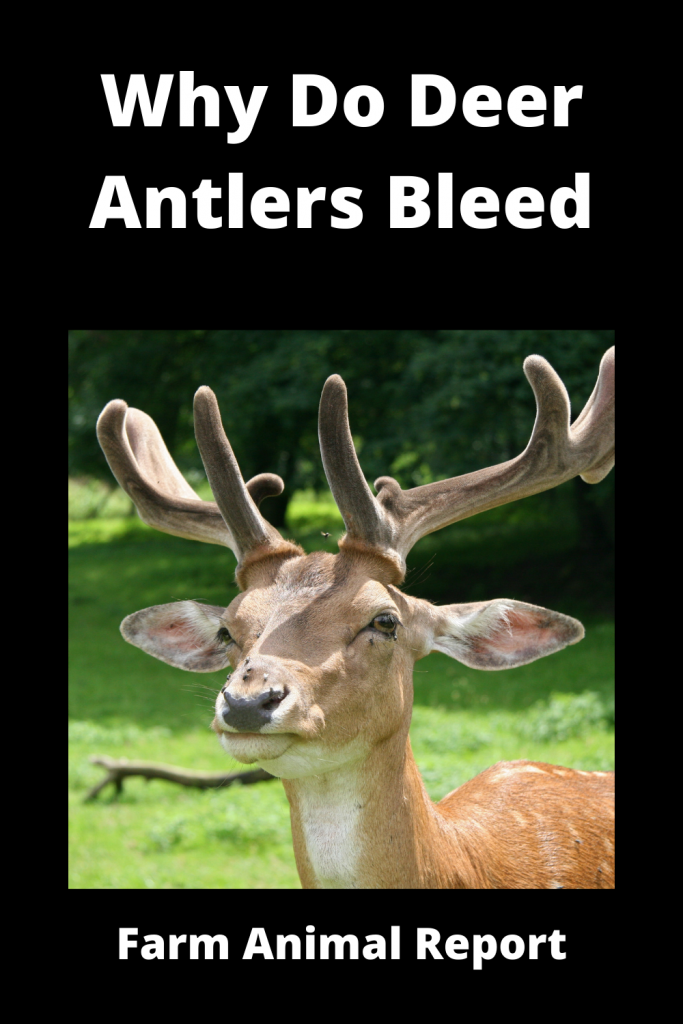
Growing 150 Days = 200″ of Solid Bone
The antler is one of the most fascinating aspects of white-tailed deer. The growth process begins with mere bumps on the buck’s head and in a span of 150 days can grow to 200 or more inches of solid bone.
Driven by increasing day-length (photoperiodism), a mature bucks antler growth begins around April 1 in the North and ends when velvet is peeled around September.
The fuzzy skin that covers antlers as they grow is terrifically concentrated with blood vessels and nerves.
It is very sensitive and nourishes antlers for about five months. Velvet helps make antlers the fastest growing tissue of any mammal. Antlers grow a half-inch to more than one inch every day. As a comparison, human hair only grows about half an inch in one month.
- Deer Antlers 1/2″ – 1″ Growth Every day
- Human Hair 1/2″ Per Month
Because of that incredibly dense nutritional value, for centuries people have harvested the discarded deer velvet to use it for medicinal purposes
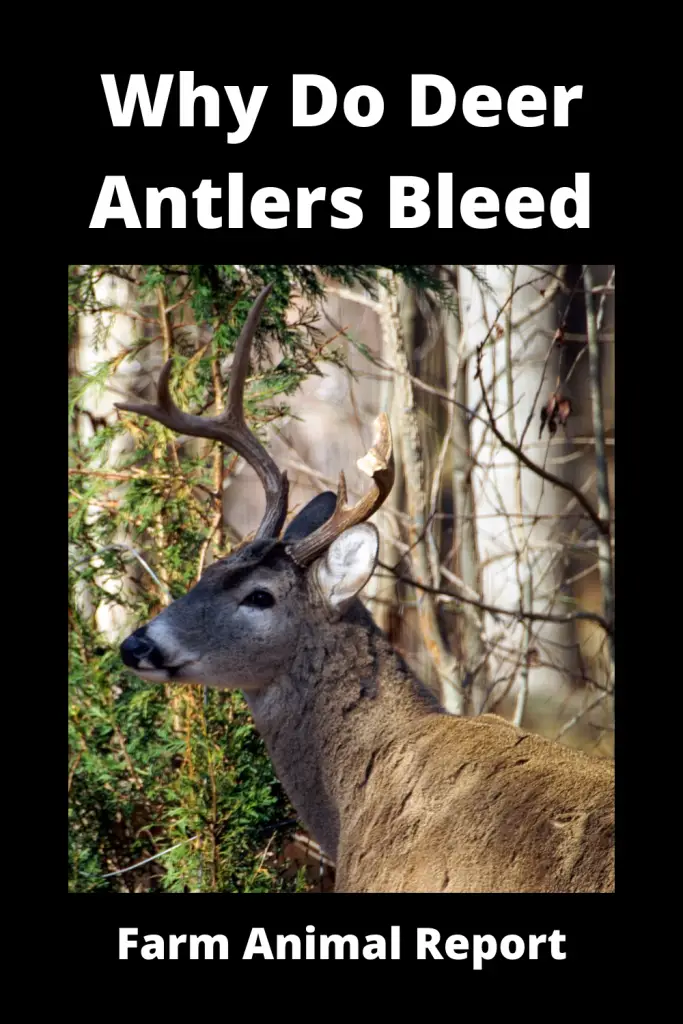
See Our Extensive Article – 7 Ways Deer Farmers Make Money
Current Medical Uses
. Today, many people like to take a velveteen supplement either in a pill form or as a spray. Some professional sports players have sworn it has been the natural supplement that has helped them recover from injuries. Scientists are torn on whether or not it actually works in humans, but some people still use it to treat everything from high blood pressure to a weak immune system.
Velvet Shedding
By fall, antlers are fully grown and the bone cells die. Velvet dries up and falls off. Although a buck in velvet rubs its antlers on trees, this is not because the shedding is itchy. At this point, no living tissue is present so it can’t itch. Bucks rub their antlers to strengthen their neck muscles and mark trees with their scent.
Antler Function / Mating
Bucks may use their antlers to forage and dig under the snow, but the main function of antlers is to combat other bucks to win females. The display of antlers and the battles between bucks ensures that the strongest and hardiest male deer end up mating with females and claiming territory.
After the mating period, changing light levels reduce testosterone levels. The buck sheds the antler rack within two to three weeks.
Deer that live in good habitats and eat well keep their antlers longer than those that don’t.
Sexual Selection
The principal means of the evolution of antlers is sexual selection, which operates via two mechanisms: male-to-male competition (behaviorally, physiologically) and female mate choice. Male-male competition can take place in two forms.
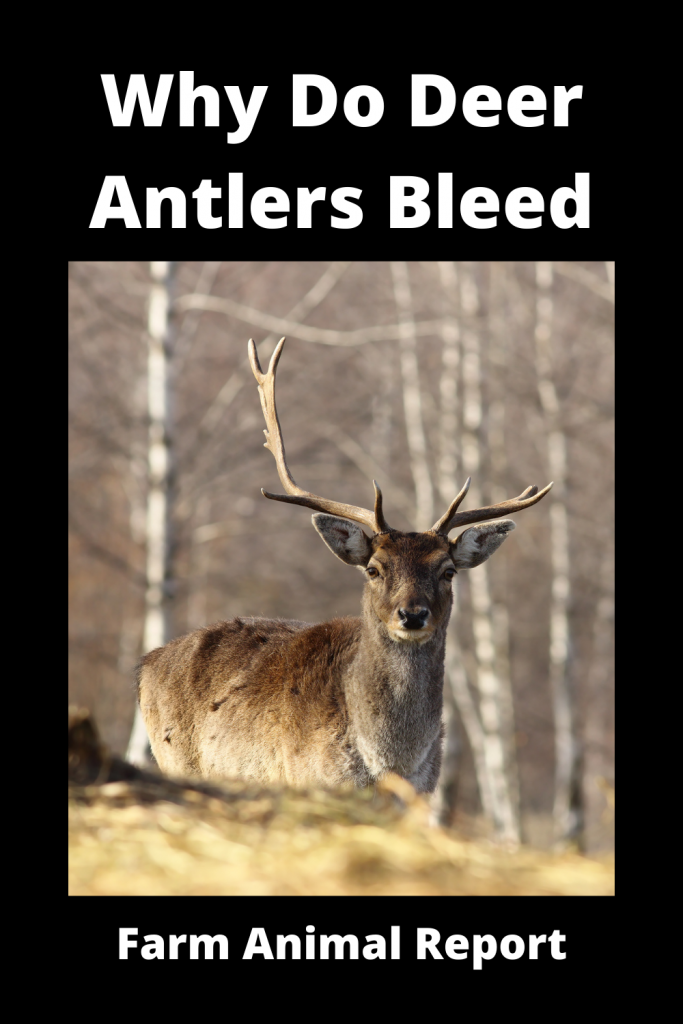
First, they can compete behaviorally where males use their antlers as weapons to compete for access to mates; second, they can compete physiologically when males present their antlers to display their strength and fertility competitiveness to compete for access to mates.
Males with the largest antlers are more likely to obtain mates and achieve the highest fertilization success due to their competitiveness, dominance, and high phenotypic quality.
Whether this is a result of male-male fighting or display, or of female choosiness differs depending on the species as the shape, size, and function of antlers vary between species.
Heritability and Reproductive Advantage
There is evidence to support that antler size influences mate selection in the red deer and has a heritable component. Despite this, a 30-year study showed no shift in the median size of antlers in a population of red deer.
The lack of response could be explained by environmental covariance, meaning that lifetime breeding success is determined by an unmeasured trait that is phenotypically correlated with antler size but for which there is no genetic correlation of antler growth.
Alternatively, the lack of response could be explained by the relationship between heterozygosity and antler size, which states that males heterozygous at multiple loci, including MHC loci, have larger antlers.
The evolutionary response of traits that depend on heterozygosity is slower than traits that are dependent on additive genetic components and thus the evolutionary change is slower than expected.
A third possibility is that the costs of having larger antlers (resource use, and mobility detriments, for instance) exert enough selective pressure to offset the benefit of attracting mates; thereby stabilizing antler size in the population.
Protection Against Predation – Do Deer Bleed when they Shed their Antlers
If antlers functioned only in male-male competition for mates, the best evolutionary strategy would be to shed them immediately after the rutting season, both to free the male from a heavy encumbrance and to give him more time to regrow a larger new pair.
Yet antlers are commonly retained through the winter and into the spring, suggesting that they have another use. Wolves in Yellowstone National Park are 3.6 times more likely to attack individual male elk without antlers, or groups of elk in which at least one male is without antlers.
Half of all male elk killed by wolves lack antlers, at times in which only one-quarter of all males have shed antlers. These findings suggest that antlers have a secondary function in deterring predation.
Deer / Cervid Farming / Profitability Table
| Deer Type | Ave Weight | Average Calves/Yr | Gestation | Meat Retail Price/lb |
|---|---|---|---|---|
| White Tailed | 150 | 2 | 201 | $ 38.95 |
| Mule | 120 - 320 | 2 | 203 | $ 7 - 9.50 |
| Elk | 71- - 730 | 1 | 240 - 262 | $ 44.95 |
| Reindeer | 350 - 400 | 1 | 222 | $ 74.95 |
| Moose | 840 - 1500 | 1 | 243 | $ 7.50 |
| Sika | 93 | 1 | 224 | 34.95 |
| Red | 440 | 1 | 236 | $ 35.95 |
| Pere David's | 370 | 1 | 286 | |
| Axis | 79 | 2 | 227 | $ 29.99 |
| Mutjah | 30 | 1 | 214 | $ 39.95 |
Livestock Fencing Height Tables
| Type of Livestock | Height of Fence | Spacing of Post Wood - $9.88 Steel - $3.58 | Best types Fencing | Price Per Roll |
|---|---|---|---|---|
| Horse | 54" x 60" | 8' | Electric Wire Wood | $ 189.00 |
| Cattle | 48" | 8' | Barbed Woven Electric | $ 259.00 |
| Sheep | 48" | 8' | Electric Woven Barbed | $ 259.00 |
| Buffalo | 5' 3" - 5' 6" | 8' | Barbed Electric | $ 249.00 |
| Deer | 6' - 10' | 8' | Woven Wire | $ 339.00 |
| Alpaca | 48" | 8' | Woven Electric | $ 259.00 |
| Pig | 2' - 3' Buried in Ground Pigs root | 6' - 8' apart | Woven Wire Barbed line on top and bottom | $ 259.00 |
| Chicken | 6' | 8' | Galvanized Hardware Cloth Chicken Wire | $ 57.99 |
| Rabbit | 3' | 8' | Chicken Wire Bury 1 foot | $ 29.00 |
Cost of Fence per Foot 2020 Tractor Supply Pricing
Types of Deer for Deer Farming
| Breed of Deer | Weight | Price of Venison | ||
|---|---|---|---|---|
| Whitetail | Buck - 150 lb Doe - 100 lbs | $ 29.50 | ||
| Mule | Buck - 150 - 300 lbs Does - 95 - 200 lbs | $ 44.95 | ||
| Red | Buck 350 - 530 lbs Doe 260 - 370 lbs | $ 21.95 | ||
| Fallow | Buck - 130 - 200 lbs Does - 60 - 90lbs | $ 39.95 | ||
| Axis | Bucks 150 - 250 lbs Does 90 - 150 lbs | $ 43.95 | ||
| Reindeer | Buck 350 - 400 lbs Does - 180 - 260 lbs | $ 74.95 |


